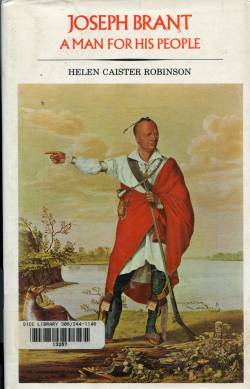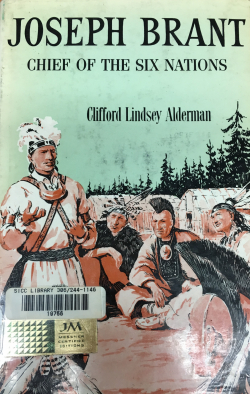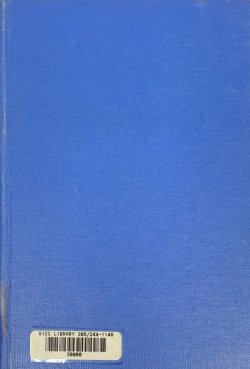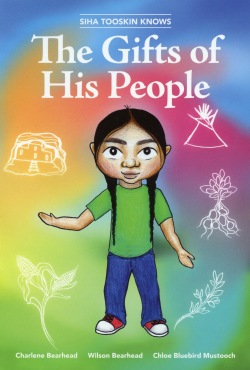Joseph Brant : a man for his people

Type
Book
Authors
Helen Caister Robinson ( Robinson, Helen Caister )
Category
General Library Collection
[ Browse Items ]
Publication Year
1971
Publisher
Pages
178
Subject
Brant, Joseph -- Biographies
Tags
Abstract
"The story of Thayendanegea, the Mohawk war chief who was given the English name Joseph Brant by the famous soldier and Indian administrator Colonel William Johnson, is one of the most inspiring and heart-wrenching in North American history.
Born in a hunting camp on the banks of the Ohio River in 1742, Brant grew up in the good-natured Colonel’s house with his sister molly, Johnson’s second wife. He went to boarding school in Connecticut and at a young age adopted the Anglican faith. After Johnson’s death, in memory of the excellent treatment he and his people had received from the British under Johnson’s administration, Brant rallied the Six Nations Indians to stand by King George III against the American Rebels. When the British lost the war and the Six Nations discovered they had to forfeit their ancient hunting grounds, Brant led his people to the Six Nations Reserve in the valley of the Grand River.
Brant soon realized he would have to become an astute politician in order to deal with the untrustworthy new government in British North America, as well as unscrupulous Americans and Loyalists who coveted the Six Nations’ landholdings. The author tells of his unceasing efforts to protect the rights of his people – trips to London (where he was lionized by society, introduced to his Great White Father and had his portrait painted by Romney), a conference with President Washington in 1982, and repeated appeals to the Governors of Upper Canada. Brant’s labours, despite minor triumphs, were poorly paid. Treaties, solemnly made, were, equally solemnly, broken, sometimes, the very next day. The author captures the nobility of Brant’s spirit, however, as he strove to give the native population of North America a strong, independent voice in the future of the continent." -- Goodreads.com.
Born in a hunting camp on the banks of the Ohio River in 1742, Brant grew up in the good-natured Colonel’s house with his sister molly, Johnson’s second wife. He went to boarding school in Connecticut and at a young age adopted the Anglican faith. After Johnson’s death, in memory of the excellent treatment he and his people had received from the British under Johnson’s administration, Brant rallied the Six Nations Indians to stand by King George III against the American Rebels. When the British lost the war and the Six Nations discovered they had to forfeit their ancient hunting grounds, Brant led his people to the Six Nations Reserve in the valley of the Grand River.
Brant soon realized he would have to become an astute politician in order to deal with the untrustworthy new government in British North America, as well as unscrupulous Americans and Loyalists who coveted the Six Nations’ landholdings. The author tells of his unceasing efforts to protect the rights of his people – trips to London (where he was lionized by society, introduced to his Great White Father and had his portrait painted by Romney), a conference with President Washington in 1982, and repeated appeals to the Governors of Upper Canada. Brant’s labours, despite minor triumphs, were poorly paid. Treaties, solemnly made, were, equally solemnly, broken, sometimes, the very next day. The author captures the nobility of Brant’s spirit, however, as he strove to give the native population of North America a strong, independent voice in the future of the continent." -- Goodreads.com.
Description
178 pages ; 22 cm
Biblio Notes
Contents:
1 A humble beginning
2 The legend of the Iroquois Confederacy
3 The vast Province
4 Council at Fort Johnson
5 To war against the French
6 The Mohawk Thanksgiving festival
7 Education at Moor's School
8 The Pontiac War
9 Marriage
10 Warragheyagey's command
11 Journey to Montreal
12 A council with the Canadian Governor
13 London
14 Dissolution of the Confederacy
15 The spring campaign
16 Scorched Earth tactics
17 Massacre at Cherry Valley
18 The end of the King's War
19 The truth about the peace
20 Plans for a Tribal Confederacy
21 The Haldimand Grant
22 Settlement along the Grand River
23 To London
24 Confederence with President washington
25 Failure of the Confederacy
26 Dedication of the Mohawk Church
27 Quarrel with Isaac
28 The struggle for a clear title
29 Success and failure
30 A man for his people.
Notes:
Includes bibliographical references.
1 A humble beginning
2 The legend of the Iroquois Confederacy
3 The vast Province
4 Council at Fort Johnson
5 To war against the French
6 The Mohawk Thanksgiving festival
7 Education at Moor's School
8 The Pontiac War
9 Marriage
10 Warragheyagey's command
11 Journey to Montreal
12 A council with the Canadian Governor
13 London
14 Dissolution of the Confederacy
15 The spring campaign
16 Scorched Earth tactics
17 Massacre at Cherry Valley
18 The end of the King's War
19 The truth about the peace
20 Plans for a Tribal Confederacy
21 The Haldimand Grant
22 Settlement along the Grand River
23 To London
24 Confederence with President washington
25 Failure of the Confederacy
26 Dedication of the Mohawk Church
27 Quarrel with Isaac
28 The struggle for a clear title
29 Success and failure
30 A man for his people.
Notes:
Includes bibliographical references.
Number of Copies
1
| Library | Accession No | Call No | Copy No | Edition | Location | Availability |
|---|---|---|---|---|---|---|
| Main | 13257 | E99.M8 B8735 | 1 | Yes |




